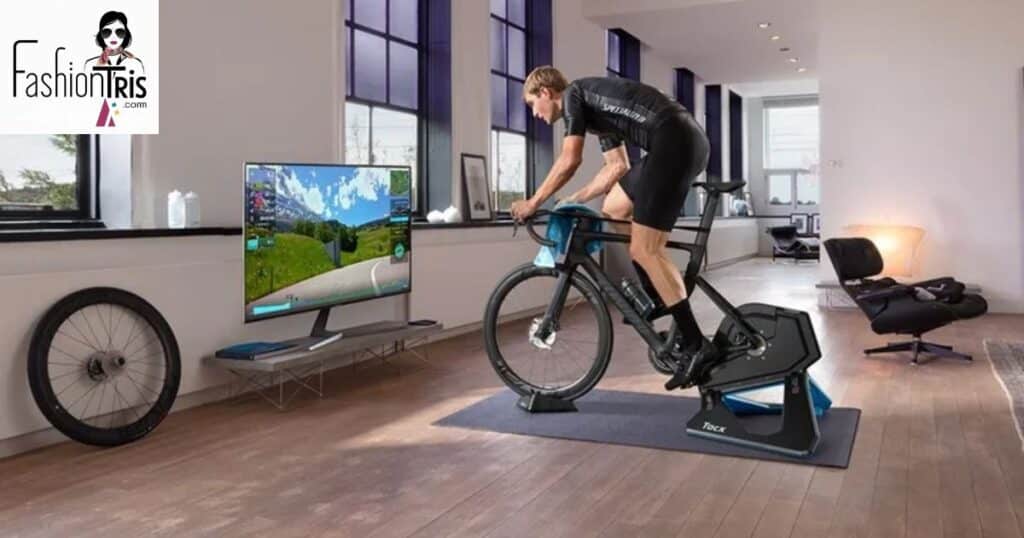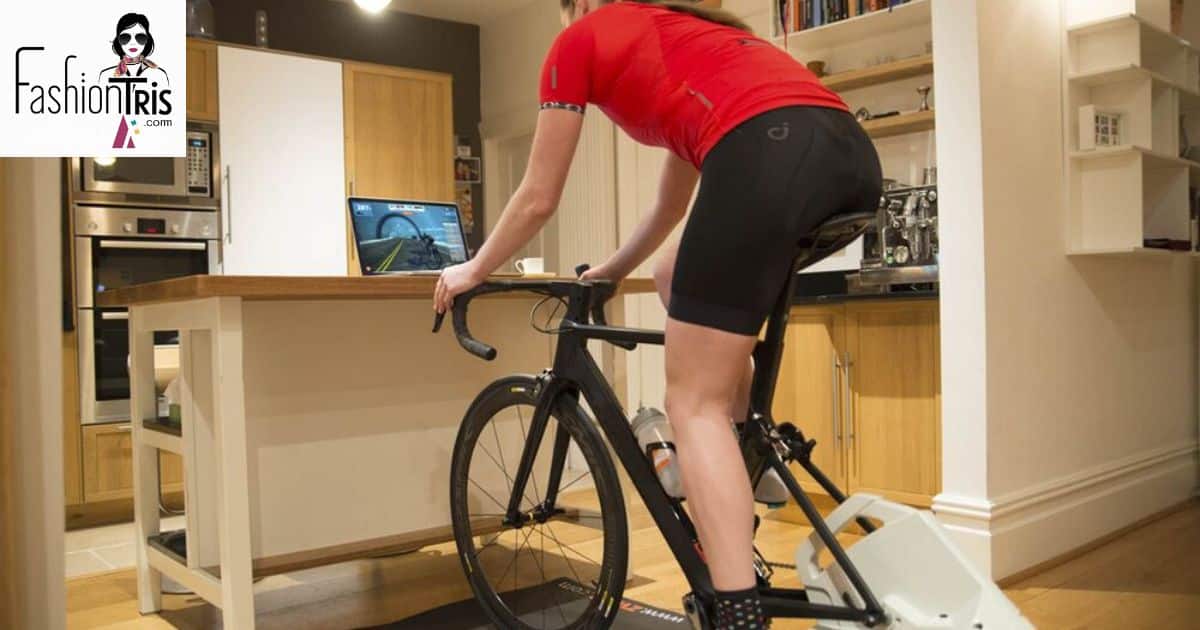Owning a Peloton bike is an investment in your health and fitness. But just like any other piece of exercise equipment, it requires some regular maintenance to keep it running smoothly.
Proper upkeep of your Peloton bike can extend its lifespan and ensure you get the most out of every ride. While Peloton bikes are built to be durable, taking a few simple maintenance steps can prevent issues down the road. From cleaning to lubrication to belt adjustments, there are some easy things you can do to keep your bike in top shape. With just a little time and effort, you can maintain your Peloton, so it continues delivering a fantastic riding experience for years to come.
Daily Cleaning of the bike
After every intense riding session, it’s a good idea to give your Peloton bike a quick once-over with a clean microfiber cloth. Wipe down the handlebars, seat, and frame to remove any sweat and moisture. This prevents salt buildup, which can lead to corrosion over time.
You will also want to wipe down the display screen and monitors after use when they may have gotten splattered with sweat. Use an approved screen cleaning solution and a soft cloth to keep the screens clear.
Check the pedals and crank arms as well, wiping away any dried sweat or debris. The cleats on the pedals can get gunked up, so brush them off after your ride.
Cleaning the touchscreen
Keeping the touchscreen clean is an essential part of Peloton bike maintenance. The touchscreen is how you interact with the classes and programming, so you want it free of smudges, streaks, and splattered sweat for the best experience. Use only approved screen cleaning solutions made for electronic displays. Avoid harsh chemicals or cleaners with ammonia, which can damage the anti-glare coating.
Lightly dampen a clean microfiber cloth with the screen cleaner and gently wipe down the touchscreen, being careful not to press too hard. Make sure to clean the entire screen surface, including the edges. Finish by buffing it dry with another microfiber cloth to prevent streaking. This quick daily cleaning will keep your Peloton’s touchscreen looking crystal clear.
Leveling Feet
Over time, your Peloton bike can become unlevel if the feet at the base get knocked out of adjustment. Having an unlevel bike can cause it to rock or feel unstable during rides. This is not only annoying but can potentially be unsafe.
To check if your bike needs leveling, carefully rock it back and forth. If it wobbles or one side lifts quickly, the leveling feet require adjustment. Start by loosening the locknut on each foot using an open-end wrench.
Tighten the cleats
Keeping your cleats properly tightened is an important yet often overlooked Peloton maintenance task. The cleats are the metal or plastic fittings on your cycling shoes that clip into the pedals, allowing you to pull up during pedal strokes. Over time, these cleats can gradually loosen from all the force applied during riding.
Loose cleats make it challenging to get proper foot engagement with the pedals, reducing efficiency and power transfer. Use a cleat cover or 4mm hex key to check that all the bolts securing the cleats are tightened down according to the manufacturer’s specifications. Tightening loose cleats ensures you can snap in and out of the pedals with ease while maintaining a solid pedal stroke. This simple step keeps your connection to the bike secure for safer, more effective cycling.

Check for any damage
To clean and tighten components, it’s essential to regularly inspect your Peloton bike for any signs of damage. Small cracks, dents, or other issues can potentially worsen over time and affect the bike’s safety and performance.
Start by giving the frame and structural components a thorough visual check. Look closely at weld points and joints for any hairline cracks. Run your hands along the frame, feeling for dents, bending, or rough spots.
Deep cleaning
While daily wipe-downs are essential, your Peloton bike will also need periodic deep cleaning. Over weeks and months of use, sweat, dirt, and grime can build up in areas that aren’t addressed by casual cleaning. Plan for a full deep clean every few months. This involves using approved bike cleaning solutions and brushes to scrub down every part of the frame, components, and accessory trays.
Remove the pedals, handlebars, and other removable parts for thorough cleaning. Use a soft bristle brush to get into those hard-to-reach crevices. Wipe down power cables and any vents or fans with a clean cloth. For the touchscreen, follow Peloton’s specific guidance on approved cleaners. This deep clean removes built-up residue and keeps your bike looking and functioning at its best.
Tightening the screws
Over time and with repeated use, the various screws and bolts holding your Peloton bike together can slowly loosen up. Loose hardware can cause parts to wobble, squeak, or potentially even break if left unchecked.
It’s a good idea to periodically check and tighten any loose screws on your Peloton bike. Use the appropriate-sized wrench or driver to snug up screws on the frame, handlebars, seat post, pedals, covers, screens, and any other assembled components.
However, be careful not to over-tighten, as this can potentially strip threads or damage parts. Just tighten screws until fitted snugly – you don’t need to crank down excessively.
Lubricating the bike
Just like any machine with moving parts, your Peloton bike requires periodic lubrication to keep operating smoothly and prevent premature wear and tear.The main components that need lubricating are the seat post and handlebar adjustment sliders. Over time, these tend to get sticky or tricky to adjust as the grease dries up.
Use a PFPE lubricant specifically designed for fitness equipment. Apply a few drops along the seat post and handlebar sliders, then work the parts through their full range of motion to distribute the lube. You’ll also want to lubricate the pedal threads and any other threaded fasteners to keep them spinning freely. Just a dab of lubricant where components screw together will do the trick.
For the flywheel axle and internal drivetrain components, it’s best to take the bike to a certified Peloton technician for proper lubrication service.
You might want to check: Why peloton bike won’t turn on – Reasons and Fixes
Maintenance Schedule
Aspects of a maintenance schedule include:
- Preventive Maintenance: Regular, scheduled tasks designed to prevent failures before they occur.
- Predictive Maintenance: Using data and analysis to anticipate when maintenance will be needed.
- Routine Inspections: Regular checks to identify potential issues early.
- Cleaning and Lubrication: Keeping equipment clean and well-lubricated to reduce wear and tear.
- Part Replacement: Replace worn components before they fail.
- Compliance Checks: Ensuring equipment meets safety and regulatory standards.
- Documentation: Keeping detailed records of all maintenance activities.
Benefits of implementing a maintenance schedule:
- Improved reliability and uptime of equipment
- Extended asset lifespan
- Reduced repair costs and unexpected breakdowns
- Enhanced safety for operators and users
- Better budget planning for maintenance expenses
- Improved efficiency and productivity
- Compliance with warranty requirements and regulations
Creating an adequate maintenance schedule involves the following:
- Identifying all assets requiring maintenance
- Determining the appropriate maintenance tasks for each asset
- Establishing the frequency of maintenance activities
- Assigning responsibilities to team members
- Implementing a system to track and manage the schedule
- Regularly reviewing and updating the schedule based on performance data

Frequently Asked Questions
How often should I clean my Peloton bike?
It’s recommended to wipe down your Peloton bike after each use with a damp cloth to remove sweat and dirt. Perform a more thorough cleaning, including the frame and moving parts, at least once a week.
Do I need to lubricate the chain on my Peloton bike?
Peloton bikes use a belt drive system instead of a chain, so there’s no need to lubricate the belt. This makes maintenance easier and reduces the mess associated with chain lubrication.
How do I calibrate my Peloton bike?
Calibration is typically done by Peloton technicians. If you suspect your bike needs calibration, contact Peloton support. They can guide you through the process or arrange for a technician to assist you.
What should I do if my Peloton bike makes unusual noises?
First, ensure all bolts and screws are tight, especially on the pedals, seat, and handlebars. If the noise persists, check if the belt is aligned correctly. If you can’t identify or fix the issue, contact Peloton support for assistance.
How often should I replace the pedals on my Peloton bike?
Peloton recommends replacing the pedals annually for safety reasons, even if they appear to be in good condition. However, if you notice any signs of wear or damage before then, replace them immediately.
Final Thoughts
Maintaining your Peloton bike is essential for ensuring its longevity, performance, and safety. By following these maintenance tips, from daily cleaning and regular inspections to periodic deep cleaning and lubrication, you can keep your bike in optimal condition.
Remember to stick to a consistent maintenance schedule, addressing both daily tasks and less frequent but crucial upkeep. While some maintenance can be done at home, feel free to contact Peloton support for more complex issues or calibration needs. With proper care, your Peloton bike will continue to provide an excellent riding experience, helping you achieve your fitness goals for years to come. Invest a little time in maintenance, and your Peloton will reward you with countless smooth, enjoyable rides.

With over 10 years of experience working in the fashion industry, I bring a unique expertise to my role. I am looking forward to sharing my knowledge and insights on the latest trends with my readers.











